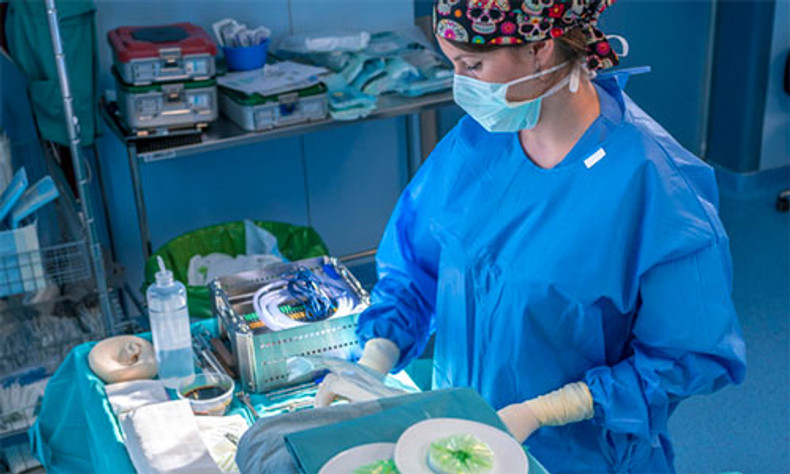
Recently, physician societies have published their own guidelines for reprocessing instruments and equipment (e.g., gastroenterology and ophthalmology). These guidelines are very confusing and somewhat disconcerting to expert reprocessing professionals for the following reasons:
- Those physician created guidelines did not go out for public comments, leaving no chance of input from reprocessing experts.
- Some recommendations referenced outdated data leading to misrepresentation of statistics.
- The guidelines often contest nationally recognized guidelines that are based on current scientific evidence.
- Technologic advancements for HLD and/or sterilization cleared by the FDA were not addressed.
Accrediting agencies such as the Centers for Medicare and Medicaid Services (CMS) and the Joint Commission (TJC), emphasizes the need to follow evidence-based guidelines and standards for sterilization and high-level disinfection (HLD) in order to decrease risks of transmitting infections to patients. The National Patient Safety Goal (NPSG) number 7 puts emphasis on facilities to: “Implement evidence-based practices for preventing surgical site infections”.1,2 Element of performance #3 under that NPSG states facilities should: Implement policies and procedures aimed at reducing the risk of surgical site infections: These policies and procedures meet regulatory requirements and are aligned with evidence-based guidelines (for example, The Centers for Disease Control and Prevention (CDC) and/or other professional organizational guidelines.”1,2
Surveyors evaluate compliance based on guidelines that the organization based their policies and procedures on. The surveyors will look for practice to be consistent throughout the organization.1 TJC recommendations include that facilities conduct a proactive risk assessment as a way of identifying gaps in compliance with evidence-based guidelines and product manufacturer’s IFU.1, 2 TJC highlights guidelines/standards from the Association of periOperative Registered Nurses (AORN), Association for the Advancement of Medical Instrumentation (AAMI), CDC Guideline for Disinfection and Sterilization in Healthcare Facilities. 2008, and the
ssociation for Professionals in Infection Control and Epidemiology (APIC).1,2
TJC Leadership standard LD.03.06.01 states: Those who work in the hospital are focused on improving safety and quality.
Element of Performance (EP) 4: states: Those who work in the hospital are competent to complete their assigned responsibilities. Examples include:
“High-level disinfection and sterilization are both complex multi-step processes that rely on competent individuals to assure that safety and quality are continually recognized as driving factors. Initial and on-going competency, training, and adhering to manufacturer’s instructions for use and evidence-based guidelines are important to patient safety.”2
Conclusion
The main job of any healthcare provider is safe patient care which means decreasing risks to patients. Healthcare facilities policies and procedures should follow the most current evidence-based science in order to minimize the potential risk of infection transmission to patients and staff. Therefore, when choosing which sterilization and HLD guidelines to follow organizations must consider the qualifications of the committee members who created the guidelines. Considerations should include whether or not reprocessing experts and regulatory representatives were involved with the development, and if the recommendations are based on a strong foundation of scientific evidence that is current and is clearly cited?
References:
- The Joint Commission – Standards FAQ Details. https://www.jointcommission.org/standards/standard-faqs/
- The Joint Commission, High-Level Disinfection and Sterilization BoosterPak.
https://www.jointcommission.org/resources/patient-safety-topics/infection-prevention-and-control/disinfection-and-sterilization/

